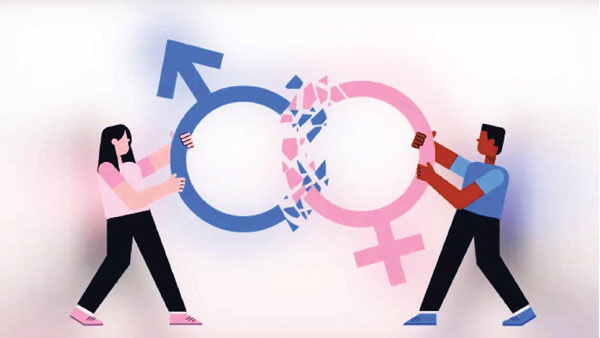By Joya Saikia
The recent death of Bangalore techie Atul Subhash has sparked intense discussions about gender-based laws in India, raising critical questions about the balance between ensuring justice for all and recognizing the socio-historical context that necessitated such laws. Subhash’s tragic death, reportedly linked to a dispute involving his wife, has ignited a firestorm of debate surrounding India’s legal framework, particularly laws like Section 85 and 86 of the Bharatiya Nyaya Sanhita (BNS) and the Domestic Violence Act. While it is deeply troubling that Atul Subhash’s case reflects broader systemic failures, it would be both reductive and harmful to make sweeping generalizations about women, labeling them all as “gold diggers” or framing gender-based laws as instruments of male persecution. Before we leap into demanding gender-neutral amendments to these laws, it is essential to understand the history, social context, and evolution of such legal provisions.
The Historical Context: Protection for Women in a Patriarchal Society
India’s journey toward gender equality is complex and deeply rooted in the social and cultural fabric of the country. While Western nations were embracing the second wave of feminism in the 1960s, advocating for legal and social equality for women, India was still grappling with deeply entrenched traditions like dowry and the systematic subjugation of women. The struggle for gender equality in India was, and in many respects still is, a battle to free women from centuries of social oppression. Women were largely relegated to domestic roles, and their contributions to the workforce and society were often overlooked.
The Dowry Prohibition Act of 1961 was one of India’s earliest attempts to address the deeply problematic and pervasive practice of dowry, but the law fell short in curbing dowry-related violence. By the 1980s, as horrific dowry-related crimes became more prevalent, the legal system in India introduced Section 498A of the Indian Penal Code (IPC) in 1983 to specifically address the issue of domestic violence. This was a direct response to the increasing number of cases where women were subjected to cruelty in marriage, often at the hands of their husbands or in-laws, and it aimed to provide legal protection to women who were enduring violence and coercion.
Section 498A of the IPC was revolutionary for its time. It made cruelty against married women, particularly by their husbands or in-laws, a cognizable, non-bailable, non-compoundable offense. The law allowed women who were victims of cruelty or harassment to lodge a complaint with the police, and it mandated that those found guilty could face a prison sentence of up to three years, along with a fine. The introduction of this law was an essential step in addressing the deeply rooted issue of domestic violence and offering women legal recourse in the face of abuse.
Evolving Perceptions of Gender Equality
Over the years, perceptions of gender equality have evolved across generations. The gradual shift from the belief that women were inherently inferior to men to the idea that men and women are equals is a story of cultural and societal transformation. Reflecting on my own experiences with university students, I have observed how perceptions of gender equality have changed over the generations. My grandmother’s generation, for instance, was indoctrinated with the belief that women were subservient to men, and for the most part, this belief went unquestioned. My mother’s generation, which came of age in the 1960s and 1970s during the rise of the Women’s Rights Movement, began to challenge these notions, although, for many, gender equality remained an abstract concept rather than a lived reality.
My generation, born in the 1980s, grew up in an era where the idea of gender equality was more widely accepted. However, while we were taught that we were equal to men, only about 20% of women in my generation truly felt this equality in their day-to-day lives. The rest of us saw gender equality as a theoretical construct, one that existed more in textbooks than in reality. Fast forward to today, the women of the post-2000 generation are not just taught equality but have internalized it. They firmly believe that they are equal to their male counterparts, and this shift in mindset is significant.
However, the same cannot be said for men of this generation. While many young men claim to support gender equality, the social dynamics and structures they navigate still carry remnants of patriarchal attitudes. This divergence between how young women and young men perceive gender equality further complicates the ongoing debate around laws designed to protect women from abuse.
The Debate on the Misuse of Laws and Gender-Neutral Amendments
Section 498A (now Sec 85 and 86 of BNS, 2023) continues to be a point of contention, with critics arguing that it can be misused by women to make false allegations against their husbands. Some argue that this law, intended to protect women, has been weaponized in cases of marital discord. These critics call for amendments to the law to make it gender-neutral, contending that it unfairly targets men, often without sufficient evidence.
While it is undeniable that some women have misused Section 498A to settle personal scores or gain an upper hand in divorce proceedings, the question remains: Can we afford to amend this law in such a way that it might fail to protect the thousands of women who depend on it for their safety? Women have been systematically oppressed for generations, and laws like Section 498A provide an essential lifeline to those trapped in abusive relationships. The possibility of misuse should not overshadow the law’s vital role in providing justice to vulnerable women who have faced domestic violence, coercion, and humiliation.
The Supreme Court of India has acknowledged the potential for misuse of this law. In 2009, the Ministry of Home Affairs issued a directive to state governments to check the misuse of Section 498A. While the concern about misuse is valid, we must ask: If Section 498A is amended and made gender-neutral, will it still be able to protect women in abusive marriages? Can we, in good conscience, take the risk of eroding this protective shield for women, knowing the societal structures they still navigate?
The wounds caused by centuries of patriarchal dominance are still fresh, and many women still bear the scars of years of subjugation. Laws like Section 498A are critical in offering a remedy to women suffering from domestic violence, and we must be cautious in tinkering with these provisions. Any attempt to alter the law must be carefully weighed, keeping in mind both the potential for misuse and the very real dangers of leaving women without adequate protection.
A Call for Empathy and Caution
In our desire to address the misuse of laws by a few, we must not lose sight of the larger context of gender inequality and the need to protect women. Yes, the legal system must be vigilant against misuse, but we must also be empathetic and considerate of the countless women who rely on these laws for their safety and well-being. Before making any drastic changes to Section 498A or any other gender-specific law, we must ask ourselves whether we are ready to sacrifice the safety of many to rectify the misuse by a few.
As India stands at a crossroads in the debate over gender-based laws, it is crucial that we tread carefully. The choices we make today will reverberate across society, affecting future generations of women and men. Let us not be swayed by the loud voices calling for quick fixes or knee-jerk reactions. Instead, let us approach this issue with the empathy, understanding, and caution that it demands, ensuring that the laws we create serve the best interests of all, without inadvertently exacerbating existing injustices.
(the writer can be reached at joyasaikia1990@gmail.com)



